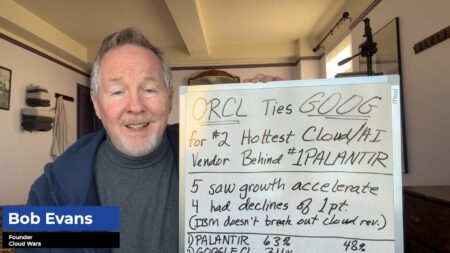Wherever something gets made and however it gets shipped, it always gets into our hands thanks to the retail industry.
Over the past couple of years, this $6.6T industry seems to have been ‘behind the curve’: from toilet paper and masks to consumer electronics and formula, and now to seemingly everything, it just can’t get supply and demand right.
7 Impacts on Retailers Determining Supply and Demand
The recent news that Target was slashing orders and discounting whole categories of hard and soft goods rattled industry analysts and consumers alike. How could such a large, well-regarded retailer get things so wrong so quickly?
As the poet said, “Let me count the ways.”
- Retailers faced an unprecedented pandemic that killed demand — then sent it skyrocketing in new and unexpected directions.
- Manufacturing and supply chain disruptions delayed re-stocking in our ‘just-in-time’ world.
- Trillions of dollars in government stimulus buoyed demand during the darkest days of the pandemic while driving demand to new heights.
- The tightest labor market in history made hiring hard, if not impossible.
- An abrupt rise in inflation drove costs through the roof.
- A war in Europe is distorting markets in everything from basic foodstuffs to rare (yet vital) minerals.
- Recent and recurring forecasts of recession or stagflation may well become self-fulfilling prophecies and kill consumer demand.
What’s a retailer to do when the world bounces from one ‘Next Normal’ to another, with a recession looming?
Retailers Can Improve Their ‘OODA Loop’
Given the popularity of the ‘Top Gun’ sequel, it’s appropriate to talk about the OODA Loop — devised by Col John Boyd when researching how fighter pilots prevail in aerial combat[3] — and its application to retail. ‘OODA’ stands for ‘Observe, Orient, Decide, Act’
- Observe something happening.
- Orient on what that ‘something’ means to your business.
- Decide what to do about it.
- Act to make it happen .
It’s described as a ‘Loop’ because it’s a never-ending sequence. You get through Observe-Orient-Decide, but before you ‘Act,’ something changes, and you go back to ‘Observe.’ Or once you ‘Act,’ a competitor ‘Acts’ in response to ‘Observing’ your actions, and so you start again.
The winner of a fast-moving dogfight — a hallmark of Acceleration Economy business — is the firm that ‘gets inside’ the opponent’s OODA Loop: The one that moves fastest from ‘Observing’ to ‘Acting.’ There are many ways to speed up your OODA Loop, but here I’ll just offer some suggestions:
- Be obsessive about data: Get more of it, get it faster, deal with it better. Maybe that means cloud-based ‘Data Lakehouses’ rather than on-premise Data Warehouses? Or deployment of IoT sensors and Edge Computing?
- Upgrade your ability to work with data to match the complexity of your environment. For example, Old Navy’s ‘Inclusive Sizing’ didn’t fail because the retailer added sizes; it failed because it didn’t forecast better.
- Reduce the length of your Supply Chain to improve Order to Shelf-stocking ‘cycle time.’
Transitioning From Supply Chain to ‘Supply Web‘
Yesterday’s supply chain model took advantage of labor and material ‘cost arbitrage’ to shift much hands-on work to low-cost regions of the world. That saved money — at least it did before ocean freight costs ballooned — but ignored the risks and costs of geopolitical instability (or deliberate foreign policies) and ‘order costs’ (including stock-out costs and fulfillment costs).
As retailers learned, saving a few bucks on merchandise but not having it to sell (especially if it’s perishable, seasonal, or fashion-oriented merchandise that gets old fast) is a recipe for killing customer loyalty and deep discounts or write-offs when the merchandise finally arrives.
Thus, the old model of a world-girdling Supply Chain, with suppliers concentrated in one part of the world that send containers of goods across thousands of miles of blue water to feed a few central distribution centers located near major consumer regions, must give way to a shorter, fatter, ‘Supply Web.’
What Is a Supply Web?
A Supply Web comprises a larger number of on-shore, near-shore, friend-shore, and perhaps ‘farm-shore’ suppliers feeding smaller order quantities to a larger number of geographically-dispersed distribution hubs.
With a Supply Web, you’re less dependent on distant plants potentially located in less-than-friendly countries. You source from multiple plants to minimize delays in the event of a health disruption or other types of disruptions. Goods move faster from source to distribution centers. If you planned well, at least some goods can move by truck or rail in a pinch. Greater dispersion among distribution centers reduce the risk of regional disturbances in local markets.
From a process and technology perspective, you’re trading lead time and perhaps labor and material cost for flexibility and reduced risk. You’re also increasing the number of alternatives: more plants, more distribution centers, and more potential routes among locations. That means an investment in sophisticated Order, Warehouse, and Transportation Management applications, as well as in people skilled in using these tools to optimize a complex Supply Web.
Final Thoughts
Wouldn’t it be nice for retailers to have the right product mix, in the right places, at the right time? Higher Volume multiplied by better Margin gives you top-line revenue and investors like that. And customers like feeling comfortable that you’ll have products on the shelves that they want, whether it’s toilet paper or seasonal merchandise.
Expect disruption for the foreseeable future and have a plan to manage through it. Customer loyalty is a terrible thing to squander!
Want more tech insights for the top execs? Visit the Leadership channel:










